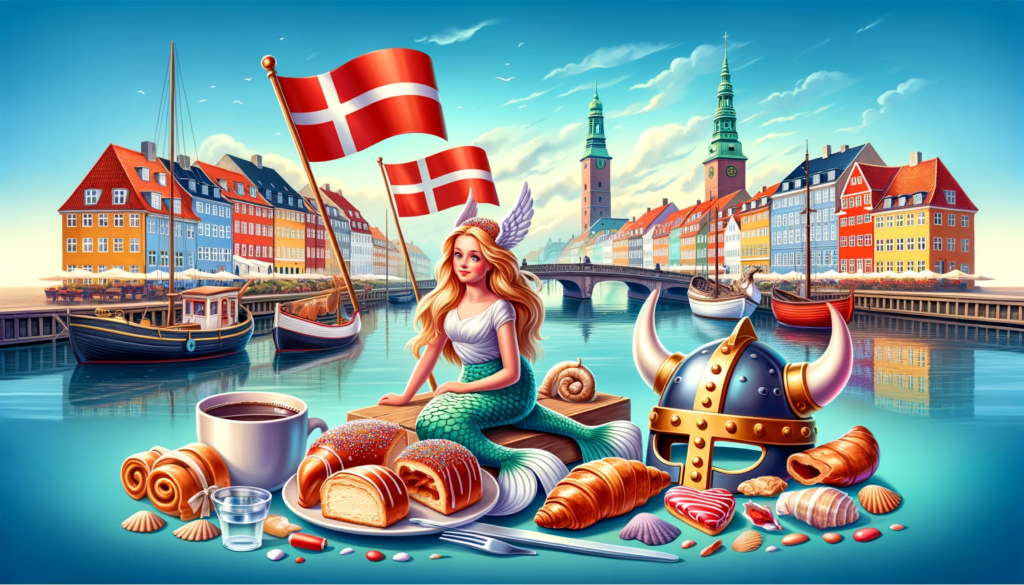
Danish cuisine, marked by its simplicity and freshness, mirrors the agricultural bounty and fishing heritage of the country. Denmark’s food scene is a blend of rustic home cooking and modern gastronomy. At the heart of this culinary culture is a love for quality produce and a pride in national dishes.
- Smørrebrød – Open-faced sandwiches, a Danish lunch classic.
- Frikadeller – Pan-fried meatballs, often served with potatoes and gravy.
- Flæskesteg – Roast pork with crackling, a Danish dinner favorite.
- Rød Pølse – Bright red sausage, typically sold at hot dog stands.
- Risalamande – Almond rice pudding, a traditional Christmas dessert.
- Stjerneskud – A lavish seafood platter, featuring fish and shellfish.
- Æbleskiver – Spherical pancakes, commonly enjoyed during Christmas.
- Wienerbrød – Danish pastry, known worldwide for its buttery layers.
- Rugbrød – Dense, dark rye bread, a staple in Danish households.
- Romkugler – Rum balls.
From the humble herring to the acclaimed smørrebrød, Danish foods tell a story of the land and sea. These dishes, often featuring dairy, pork, and fish, showcase a commitment to flavor and tradition. Moreover, the Danes’ innovative spirit shines in their approach to contemporary cuisine, influencing food trends far beyond their borders.
Ultimately, Denmark’s culinary offerings provide a comforting sense of hygge — a concept embracing coziness and contentment. This is evident in the warm gatherings around a family table or the inviting ambiance of Danish cafes and restaurants. Danish food, therefore, is more than a mere meal; it’s a gateway to understanding the Danish way of life.